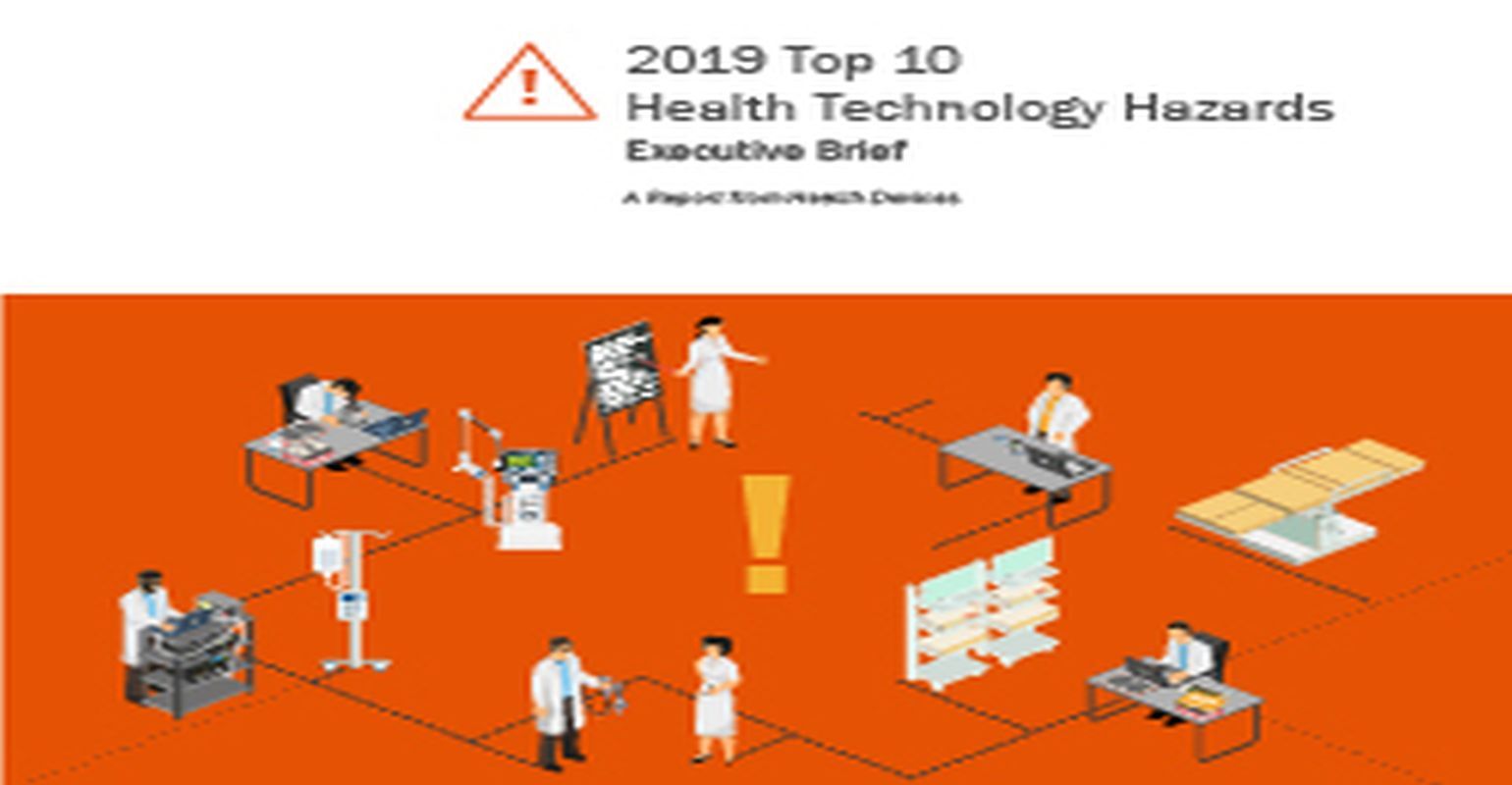Infection Prevention-Related Issues Included in ECRI Institute’s List of 2019 Health Technology Hazards

ECRI Institute, a patient safety and medical technology research organization, places health technology cybersecurity at the top of its just-released 2019 Top 10 Health Technology Hazards. The report highlights the potential for hackers to exploit remote access systems to gain unauthorized entry to a healthcare organization's networked devices and systems. Such attacks can disrupt healthcare operations, hindering the delivery of care and putting patients at risk.
Cybersecurity is clearly a growing concern. ECRI Institute published 50 cybersecurity-related alerts and problem reports in the last 18 months, a major increase over the prior period.
"The consequences of an attack can be widespread and severe, making this a priority concern for all healthcare organizations," says David Jamison, executive director of ECRI's Health Devices program. "In critical situations, this could cause harm or death."
The annual list defines the top health technology hazards that ECRI Institute believes warrant priority attention by healthcare leaders. It serves as a starting point for discussions, helping healthcare organizations plan and prioritize their patient safety efforts.
Other topics on the list include contaminated mattresses, retained surgical sponges, improperly set alarms on ventilators and physiologic monitors, recontaminated endoscopes, infusion pump errors, mechanical failures with overhead patient lifts, damage to electrical equipment from cleaning fluids, and battery charging errors.
"Healthcare organizations need to take technology safety seriously," says Jamison. "That's why our annual report includes practical solutions that can help prevent patient harm."
The full report, accessible to ECRI Institute members, provides detailed steps that organizations can take to prevent adverse incidents at their facilities, not just respond to them. The 2019 Top 10 Health Technology Hazards executive brief is available for complimentary download at
www.ecri.org/2â019hazards.
ECRI Institute's engineers, scientists, clinicians, and other patient safety analysts select topics based on insights gained during incident investigations, medical device testing, and reviews of problem reporting databases. They weigh factors such as the severity, frequency, breadth, insidiousness, and profile of the hazards.
The List for 2019:
1. Hackers Can Exploit Remote Access to Systems, Disrupting
Healthcare Operations
2. “Clean” Mattresses Can Ooze Body Fluids onto Patients
3. Retained Sponges Persist as a Surgical Complication
Despite Manual Counts
4. Improperly Set Ventilator Alarms Put Patients at Risk for
Hypoxic Brain Injury or Death
5. Mishandling Flexible Endoscopes after Disinfection Can
Lead to Patient Infections
6. Confusing Dose Rate with Flow Rate Can Lead to Infusion
Pump Medication Errors
7. Improper Customization of Physiologic Monitor Alarm
Settings May Result in Missed Alarms
8. Injury Risk from Overhead Patient Lift Systems
9. Cleaning Fluid Seeping into Electrical Components Can
Lead to Equipment Damage and Fires
10. Flawed Battery Charging Systems and Practices Can Affect
Device Operation
Source: ECRI Institute
2 Commerce Drive
Cranbury, NJ 08512